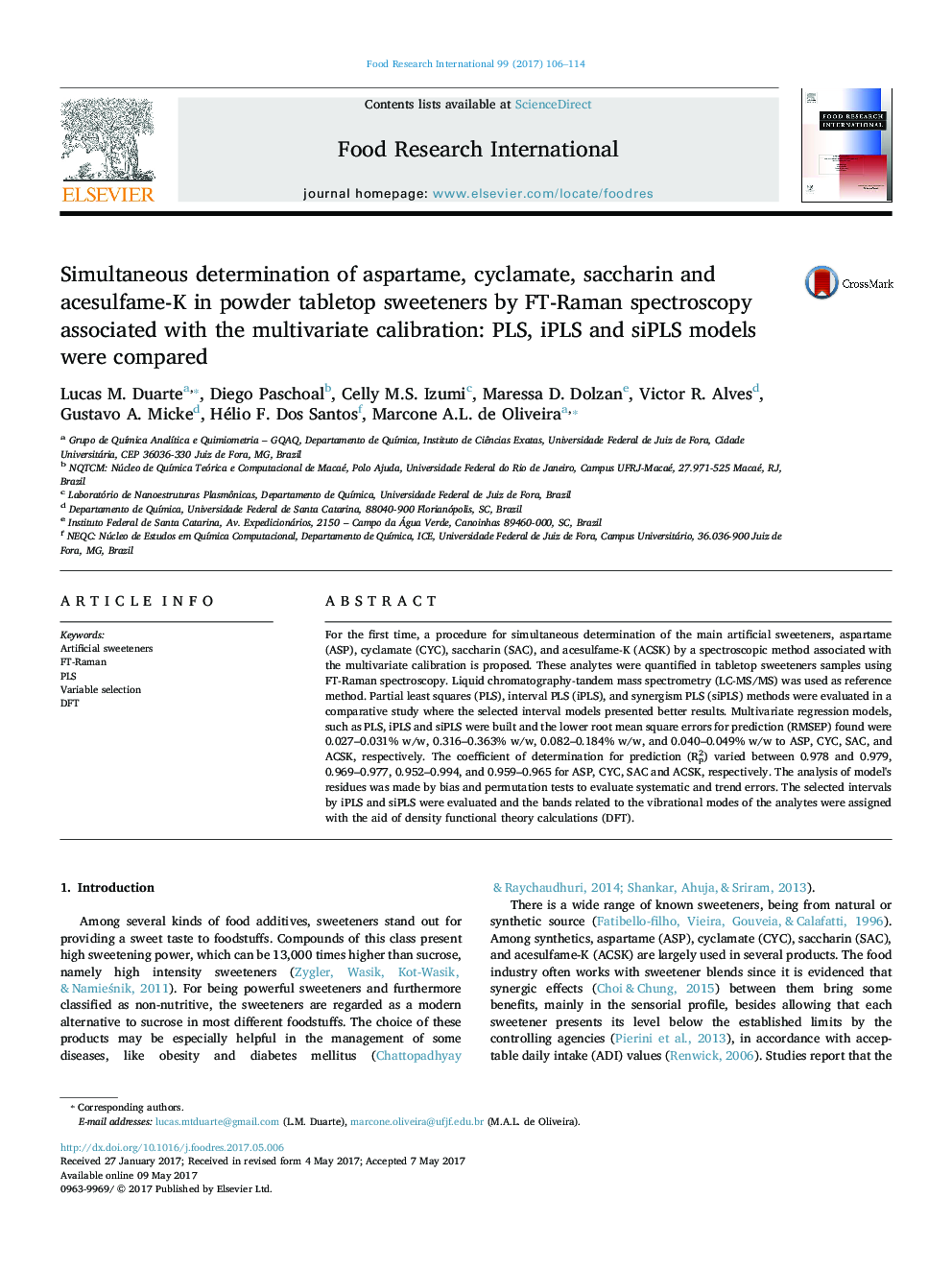| Article ID | Journal | Published Year | Pages | File Type |
|---|---|---|---|---|
| 5768083 | Food Research International | 2017 | 9 Pages |
â¢The main artificial sweeteners were determined in powder tabletop sweeteners.â¢Liquid chromatography-tandem mass spectrometry was used as reference technique.â¢Raman spectroscopy was used as proposed analytical technique.â¢Chemometrics analysis by PLS, iPLS and siPLS was used to build prediction models.â¢DFT was used to calculate the frequencies to assign the spectral regions selected.
For the first time, a procedure for simultaneous determination of the main artificial sweeteners, aspartame (ASP), cyclamate (CYC), saccharin (SAC), and acesulfame-K (ACSK) by a spectroscopic method associated with the multivariate calibration is proposed. These analytes were quantified in tabletop sweeteners samples using FT-Raman spectroscopy. Liquid chromatography-tandem mass spectrometry (LC-MS/MS) was used as reference method. Partial least squares (PLS), interval PLS (iPLS), and synergism PLS (siPLS) methods were evaluated in a comparative study where the selected interval models presented better results. Multivariate regression models, such as PLS, iPLS and siPLS were built and the lower root mean square errors for prediction (RMSEP) found were 0.027-0.031% w/w, 0.316-0.363% w/w, 0.082-0.184% w/w, and 0.040-0.049% w/w to ASP, CYC, SAC, and ACSK, respectively. The coefficient of determination for prediction (R2p) varied between 0.978 and 0.979, 0.969-0.977, 0.952-0.994, and 0.959-0.965 for ASP, CYC, SAC and ACSK, respectively. The analysis of model's residues was made by bias and permutation tests to evaluate systematic and trend errors. The selected intervals by iPLS and siPLS were evaluated and the bands related to the vibrational modes of the analytes were assigned with the aid of density functional theory calculations (DFT).
Graphical abstractDownload high-res image (98KB)Download full-size image
